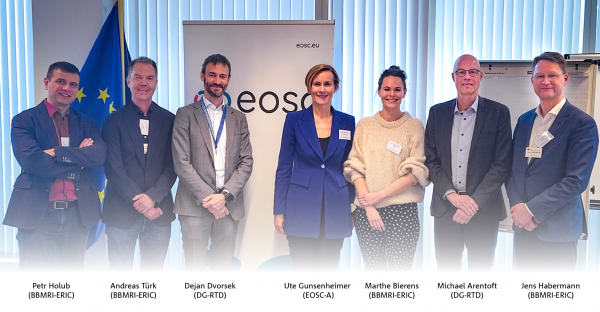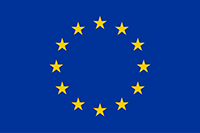I am looking for information as
Researcher

Industry

Patient

BBMRI-ERIC joins EOSC Federation build-up phase
BBMRI-ERIC joins EOSC Federation build-up phase
This article is 548 words and a three-minute read.
BBMRI-ERIC is one of 13 Candidate EOSC Nodes invited to participate in the first wave deployment of the EOSC Federation. The implementation of the Federation’s build-up phase kicked off in Brussels on 17-18 March 2025 at a workshop organised by the EOSC Tripartite Group under the auspices of DG RTD. This article explores what this means for enabling better access to research data across Europe and what BBMRI uniquely brings to the table.
Capabilities, resources, and scientific impact: what BBMRI-ERIC will bring to the EOSC Federation
BBMRI, one of the largest ERIC’s, is a key player in driving transnational collaboration and strategic alignment between European Research infrastructures. This is demonstrated by its coordination of the ERIC Forum and in its role as a member of the Life Science Strategy Board and as a member of the EOSC Association.
There are three major areas where BBMRI-ERIC provides significant contribution to the EOSC Federation: its expertise in the sensitive health data domain; deployment of key technologies in alignment with Technical Readiness Level Nine and evolution of harmonised service provision that utilises the One Health paradigm.
Prof. Petr Holub, BBMRI-ERIC’s CIO, highlights the benefit of BBMRI-ERIC potentially becoming one of the first EOSC Nodes for the community:
“As one of the first EOSC Nodes, BBMRI would be well placed to foster cross-domain collaboration as the community embraces a One Health strategy. It will allow us to interact with e-infrastructures and computer/storage capacity providers for better data management and sharing with our users. Providing capacity for secure and trusted data processing environments for sensitive health data will enable new collaborative approaches at larger scale.”
This impact on research will be demonstrated in several use cases as Petr Holub further explains:
“Together with our communities, we are conducting AI research for medical applications and developing medical use cases (related to prostate and colorectal cancer) that will be part of this first-wave EOSC Node. We will also be running AI-assisted tissue classification models on histopathological imaging to offer more in-depth metadata and deeper value to researchers.”
Looking to the first phase, Prof. Jens K. Habermann, BBMRI-ERIC’s Director General, said:
“BBMRI-ERIC, in collaboration with the other first-wave Candidate EOSC Nodes, and the many to follow, is looking forward to contributing to the development of a strong EOSC Federation.”
Background and further reading:
The European research landscape is constantly evolving to build infrastructures for effective data and sample sharing. This is a key component for transnational data-based research making it easier for scientists to work together on global challenges like climate change, health, and a responsible use of AI.
The European Open Science Cloud (EOSC) stands at the intersection of Europe’s strategic priorities, offering solutions to critical challenges in research, innovation, and societal development. As a transformative tool, EOSC fosters digital sovereignty, inclusivity, trust, and transparency in the research and innovation domain. It is designed not only to support the Open Science movement but also to underpin Europe’s broader competitiveness agenda. The deployment of a network between data repositories and services will be instrumental for Open Science to progress in Europe. For all these reasons, the EOSC Federation of nodes is being created.
You can learn more about EOSC, the EOSC Association and the EOSC Federation here.






